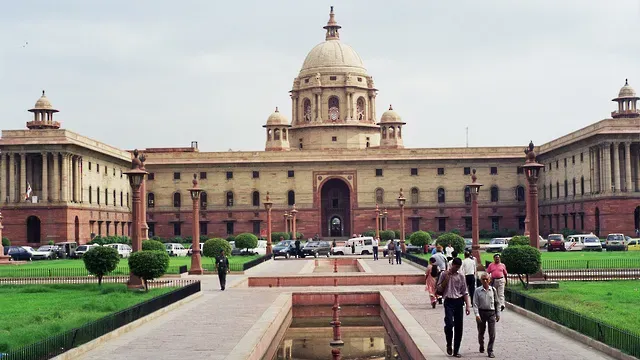The weekend read: India’s virus recovery is carbon heavy. It doesn’t have to be.
In conversation with Vibhuti Garg, energy finance analyst at the Institute for Energy Economics and Financial Analysis

Welcome to Lights On, a newsletter that brings you the key stories and exclusive intel on energy and climate change in South Asia.
What a journey this newsletter has been. Since May, I have increased from one to three issues a week, and dived deep into a broad range of stories that are too often neglected outside India. Among my favourites are a look at why Delhi still can’t curb waste pollution, a reflection on the future of hydrogen in India, and a feature on how urban mining can help India in its quest for energy independence.
I hope you enjoyed my stories and you will want to keep reading as a member of the Lights On community. Today is your last chance to sign up with a 20 percent discount - don’t miss out.
From next week, part of my stories will go behind a paywall. If you decide to become a member, your money doesn’t just pay for my work, it helps keep this project alive in the long term for many others too. So if you can afford it, consider becoming a founding member, and I promise it will be worth it.

A labourer working at a diesel powered crusher in font of a wind turbine - Image credit: Flickr/Land Rover Our Planet
Seven months into the Covid crisis, we know a lot about what countries should do in theory to ‘build back better’, but there isn’t much clarity on how they are actually doing, or what a green recovery would look like in practice for each country. We’ve heard soundbites such as “ditch coal and invest in solar” as a way out of the Covid depression since the first weeks of the lockdown, but the same idea won’t translate in the same way everywhere. Emerging economies in particular need to be extra smart as they face a range of coexisting crises.
In a paper published this week, Vibhuti Garg, energy economist with the Institute for Energy Economics and Financial Analysis, looked at the available data on how various countries are faring in their recovery efforts, and how much of their stimulus packages is devoted to decarbonising the economy.
Here she speaks to Lights On about how India can shift its recovery path towards a sustainable energy future.
Lights On: During your research, how much did you find countries are allocating to their Covid recoveries, and how much of those packages goes to green recovery?
Vibhuti Garg: Based on data from the International Monetary Fund (IMF), India has a stimulus spending amounting to 1.2 percent of its GDP. This is much lower than other countries such as the US, Japan and Germany, which have allocated the equivalent of 12.3, 11.3 and 9.4 percent respectively.
But only a tiny amount of this is actually going towards a ‘green’ recovery. For example, the US is contributing only 1.1 percent towards low carbon, that's the stark difference between the US being the largest country by overall size of its recovery package, but if you look at their green share, it’s minuscule. Whereas if you look at European countries as a whole, their contribution towards green stimulus is 20.2 percent. And if you take the UK, France, Germany individually they are doing far better than most other countries. They are allocating money for clean energy, and more specifically on research and development as well as energy efficiency.
How is India doing compared to Europe and the US? The whole recovery budget is not huge to start with.
India’s green share is around 2.4 percent of the entire stimulus package that has been announced so far. Out of the total, around $23.3 billion have been allocated to various energy sources, of which $9.86 billion is to fossil fuels including oil, gas and coal. And just about $1.3 billion is being given to clean energy. Another 52 percent is allocated for other energy related activities such as support for distribution companies.

A breakdown of India’s energy recovery package. Fossil fuel commitments are rated 'conditional' where they come with climate targets attached, while 'conditional' clean pledges are potentially green policies that lack in detail or concrete timelines - Image credit/Energy Policy Tracker
India already has a vast portfolio of green policies, ranging from support for electric vehicles to an efficient auction system to facilitate the uptake of renewable development. How do you count what constitutes green recovery within this jigsaw of actions?
If we look for example at electric vehicles, the government has an ambitious incentive scheme, FAME. But in the last 5 or 6 months, they haven't come out with any other stimulus that is being given on account of the Covid crisis, so it's a business as usual scenario. On the other hand, the government of Andhra Pradesh has announced a new policy in support of farmers, where they will receive nine hours of continuous power from a new 10GW mega solar project. That policy came during these last six months and aims to support a group of consumers that has been hit particularly badly. So that's how we count efforts towards a green recovery.
One of the Covid response myths I hear all the time is that swapping fossil fuels for clean energy is such a no brainer that countries should just get on with it. But for India, as well as other emerging economies, the leap is not that easy.
There’s an equality problem there, as India may not have the same spending power and risk appetite of other richer countries, especially after a massive public health crisis. What do you think is achievable for India?
Developing countries like India, where cost is a very big issue and a large part of the population cannot afford expensive clean energy technologies, all face the same dilemma. How do you meet your energy demand and boost economic growth in a way that is cheap?
Clearly there is a tendency to rely on or promote resources which are domestically available and are cheap.
More importantly, governments need the taxes and royalties from the fossil fuels industry because they help provide for a population that has been so badly hit. From the fiscal perspective, that's the reason India still has a strong push for coal. But clearly, I'm sure they do realise that the kind of money they have to spend to mitigate the negative impacts of fossil fuels on public health is huge. So if you look from that perspective, I would say that the overall impact [of fossil fuels] on the fiscal budget is negative.
Would a drastic shift of focus towards renewables rectify this situation?
Another reason why the government is not providing support to renewables it’s because they have become competitive on their own. But while solar and wind already have a market, other technologies such as storage and electric vehicles still need a lot of support. That's where the government should focus now, rather than complaining that renewable energy is intermittent, and about the cost of integrating new renewable energy.
We agree that wind and solar do not need any government support, but other key technologies are still expensive, and there is no research and development happening in India - we just take advantage of what’s been developed elsewhere in China or Europe.
What else can Indian policymakers do if they are looking to inject more sustainability into what is currently a very carbon intensive stimulus package?
The government understands the benefits of clean energy, and they have come up with policies to promote that, but policy drawbacks are still far too common. For example, the government is trying to promote solar rooftops but for as long as states act as a deterrent or create bottlenecks to open access, this will demotivate consumers.
As a result, while our target is 40GW of installed capacity by 2022, as of now we just have around six. Policy certainty is something a lot of players want to see so that they can de-risk their investment, and in order to draw more capital towards these technologies we need state policy stability too.
That’s all for today! From tomorrow, this newsletter goes paid. If you haven’t subscribed yet, you can do it below with a 20 percent discount - valid only for today!



